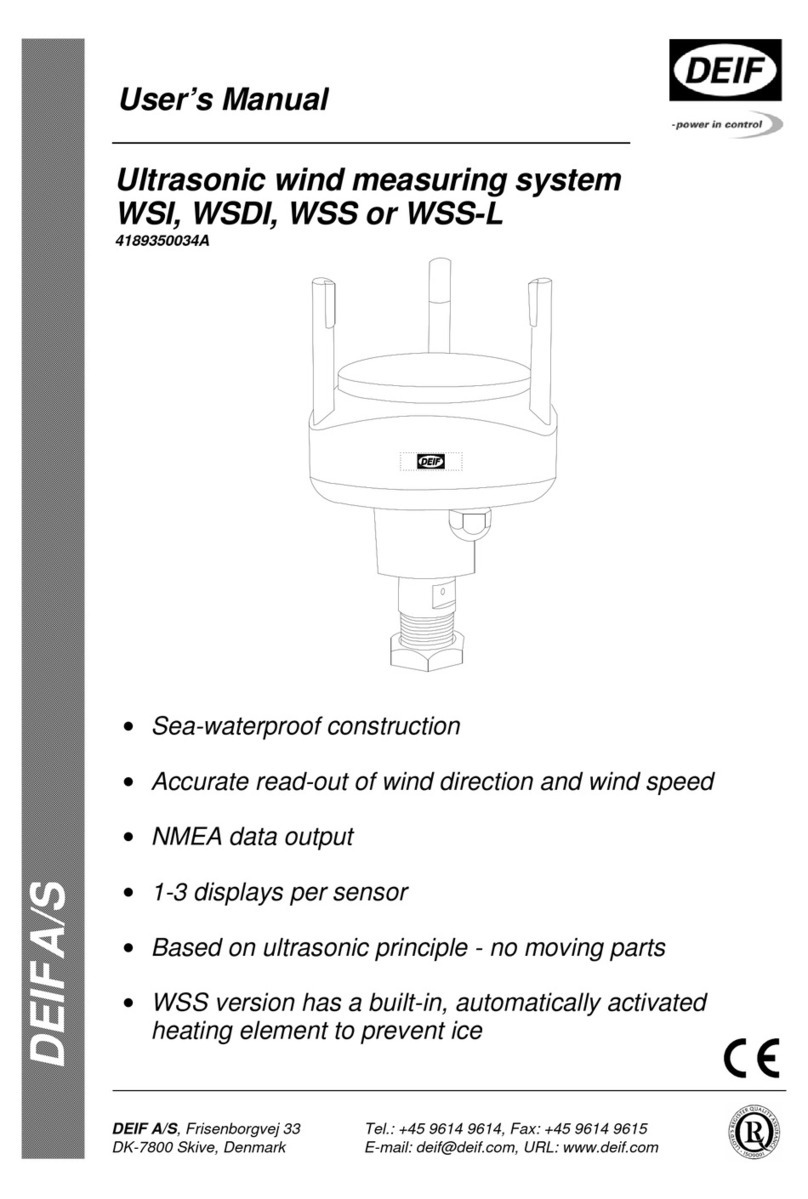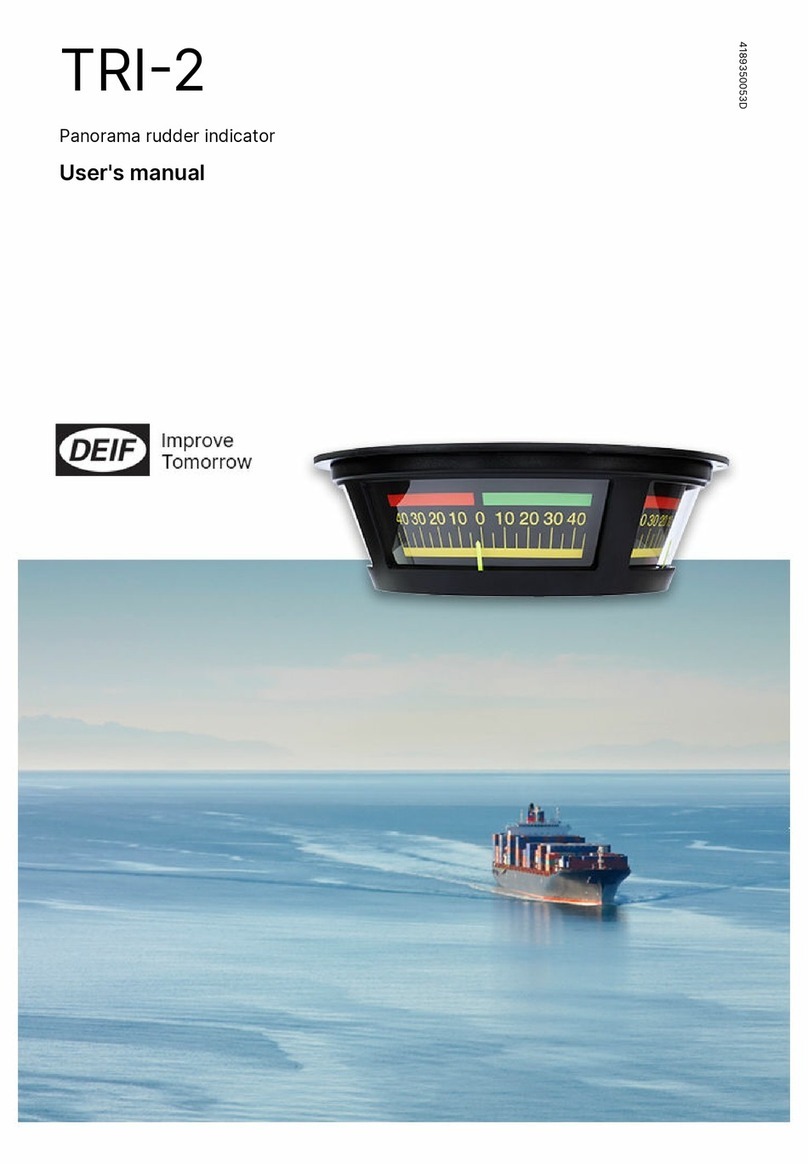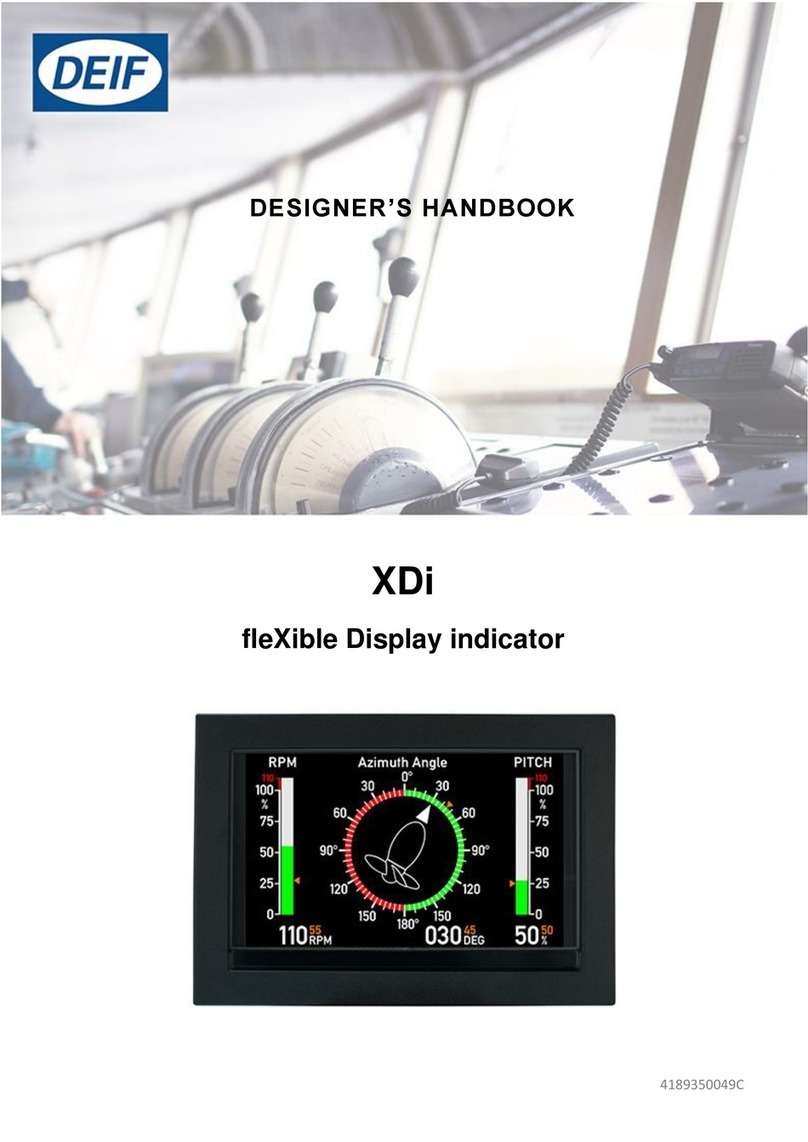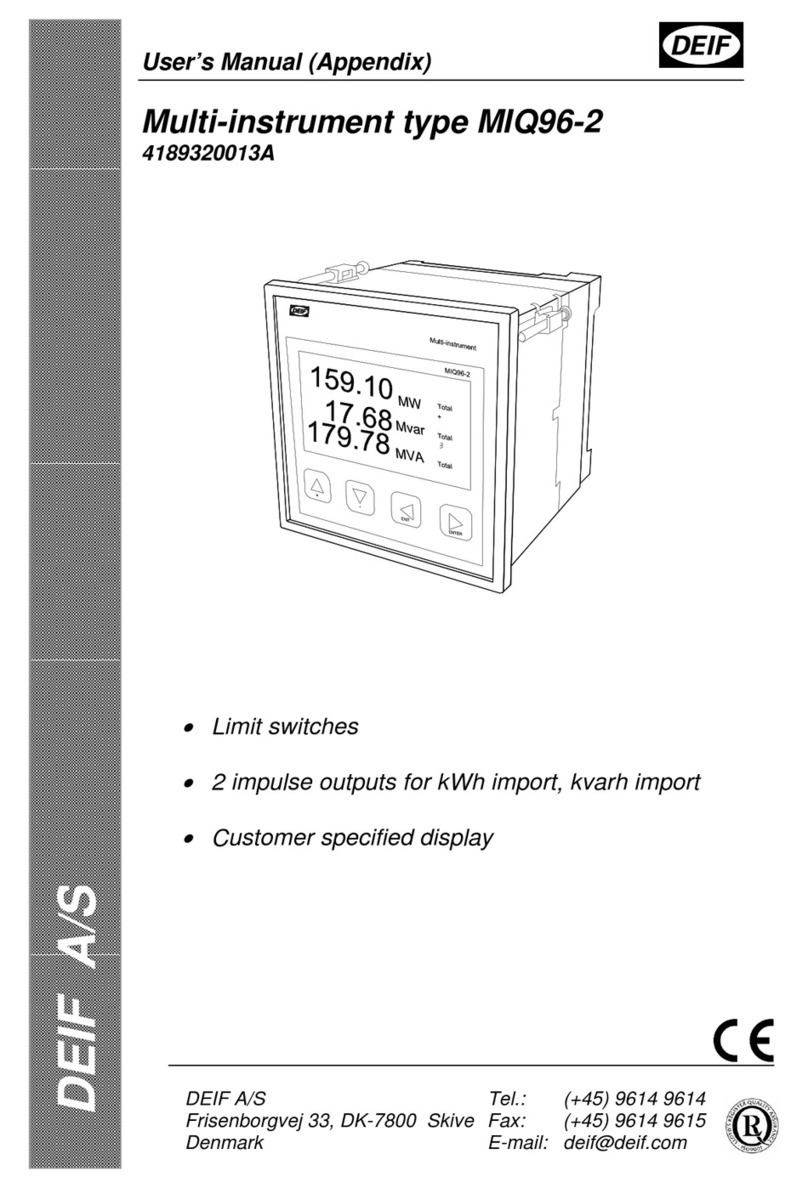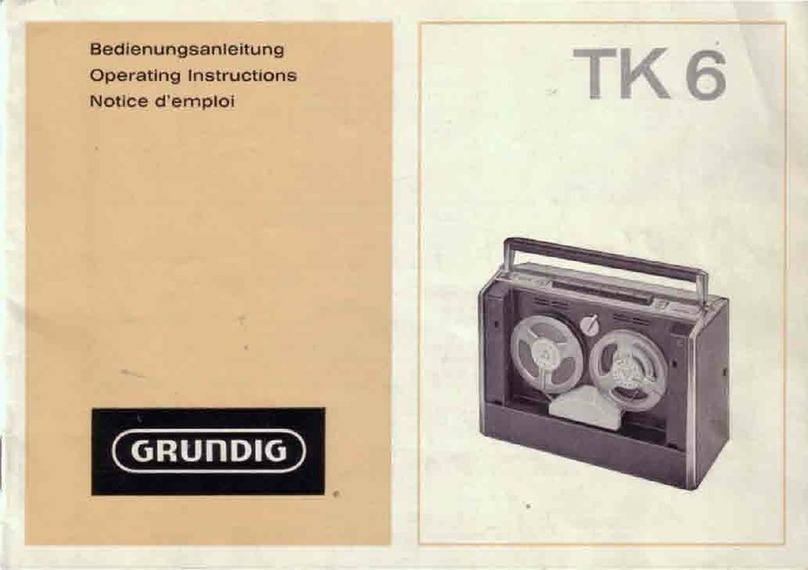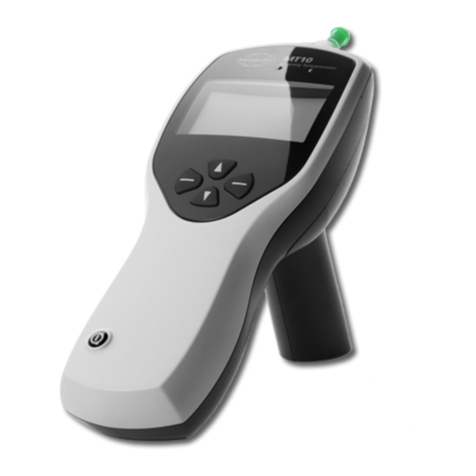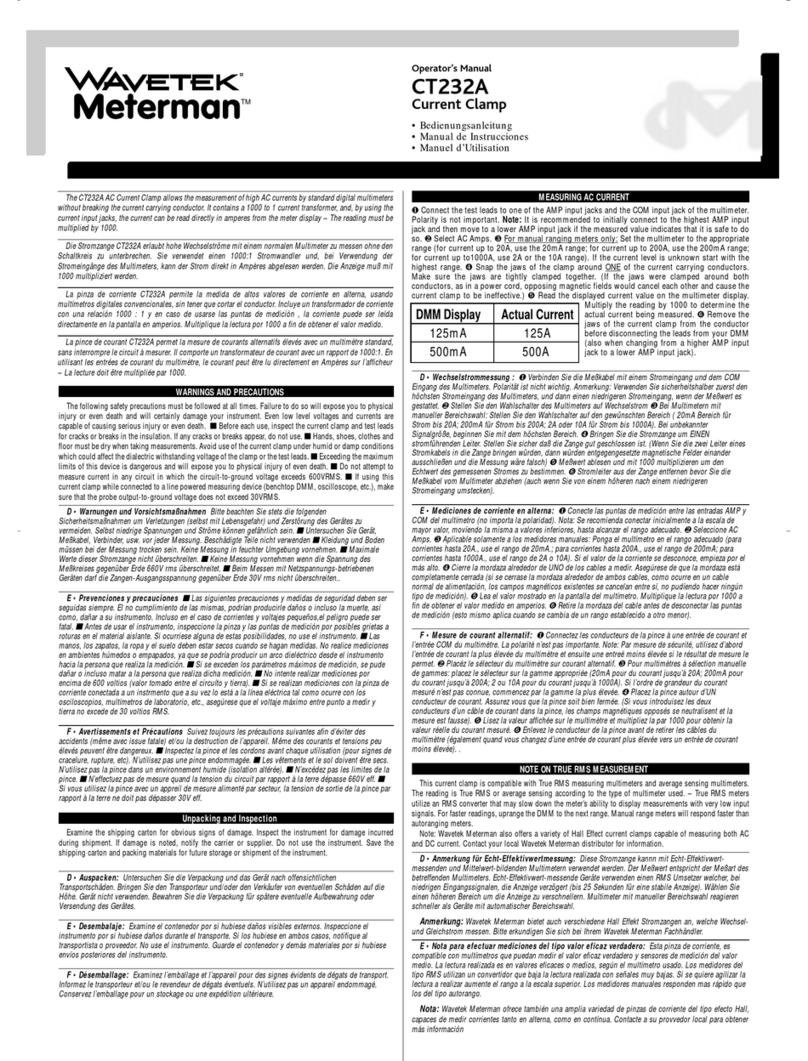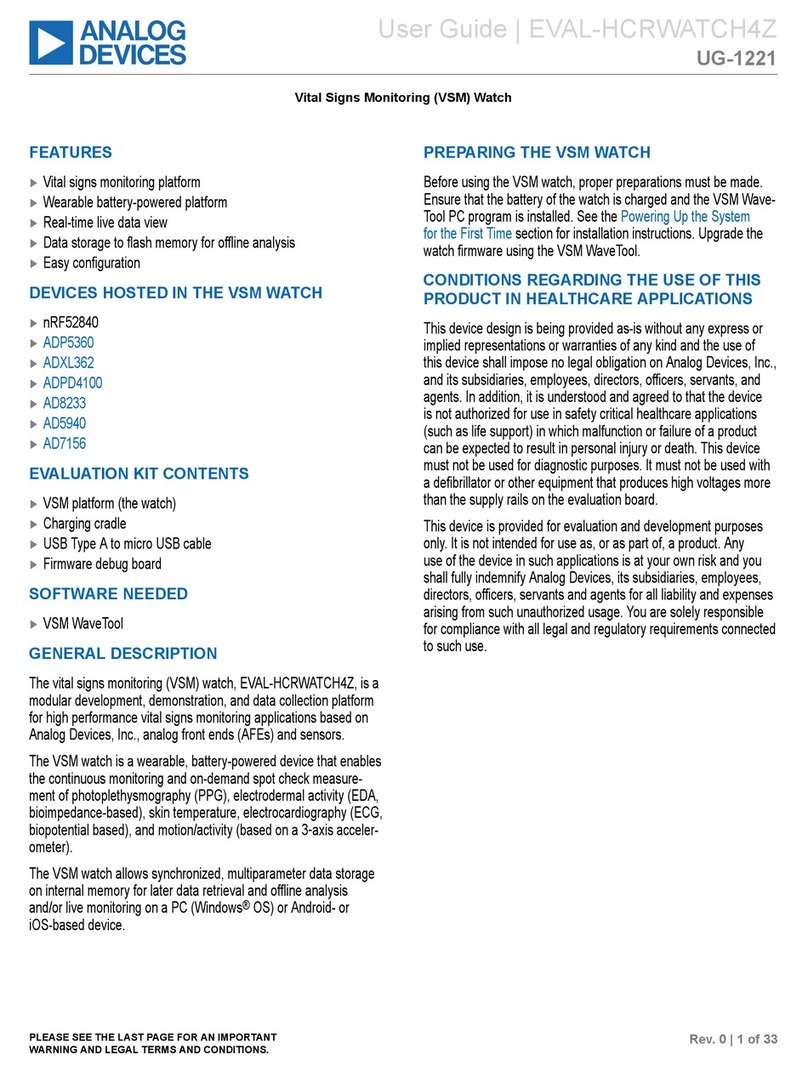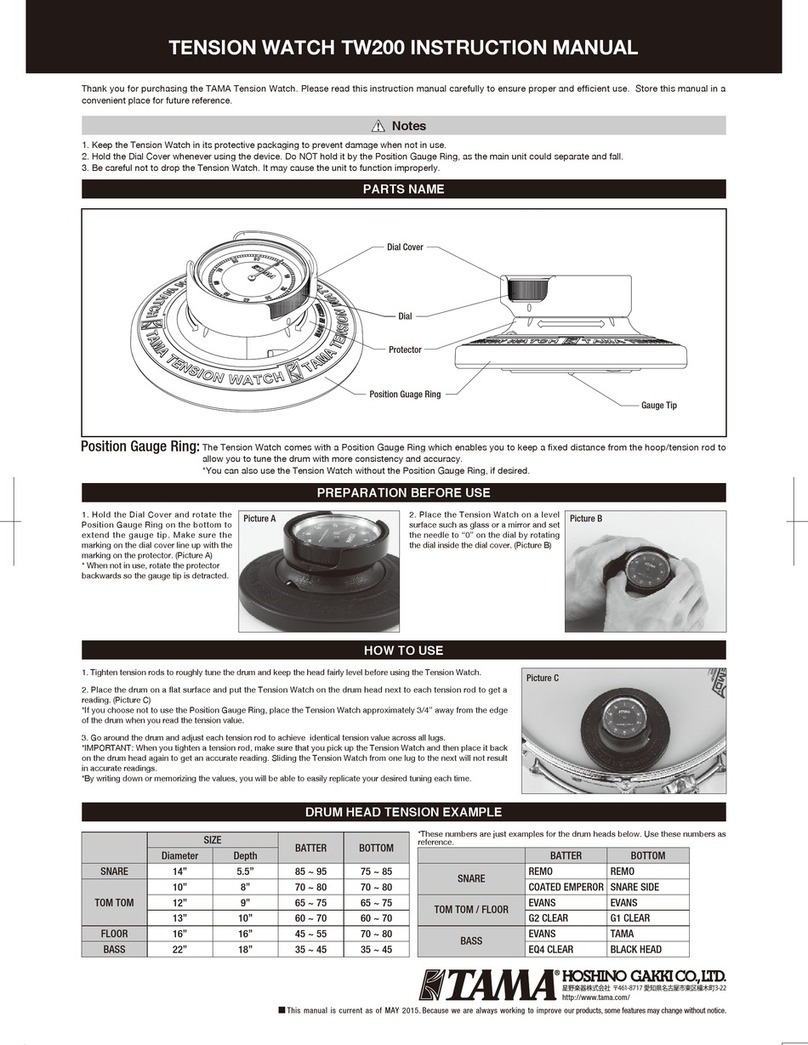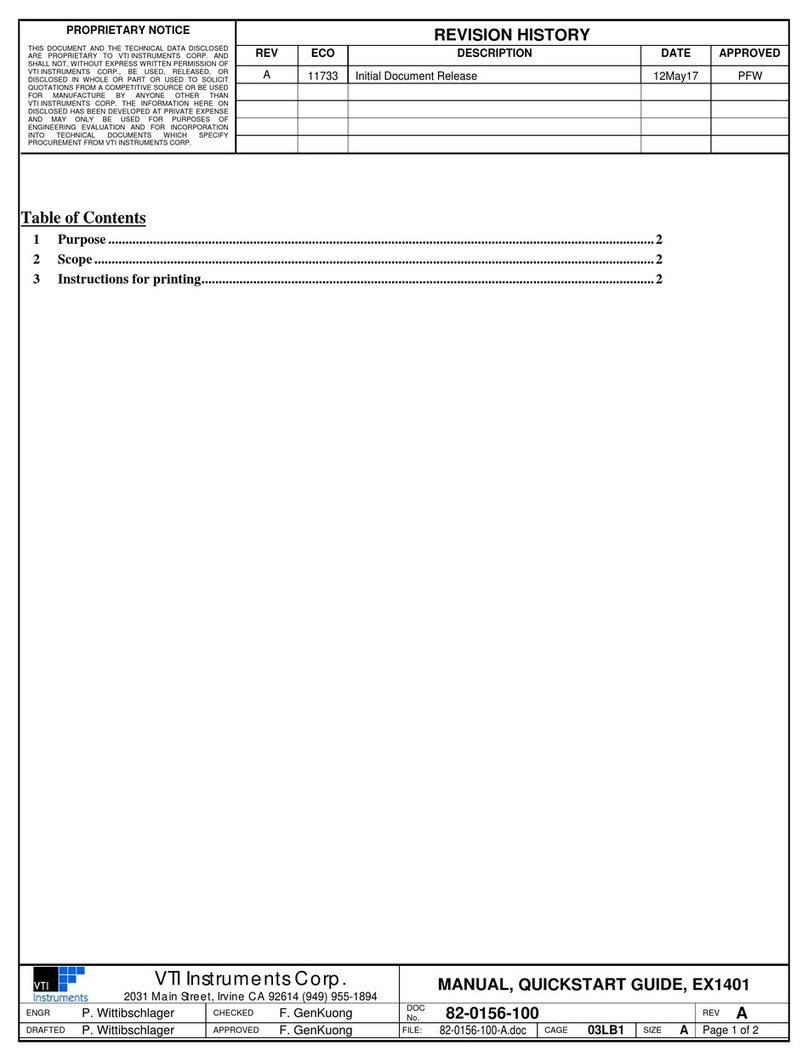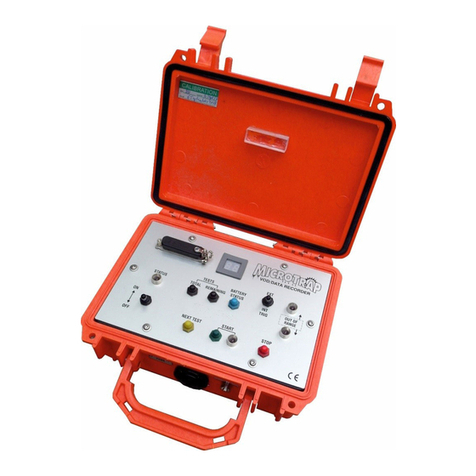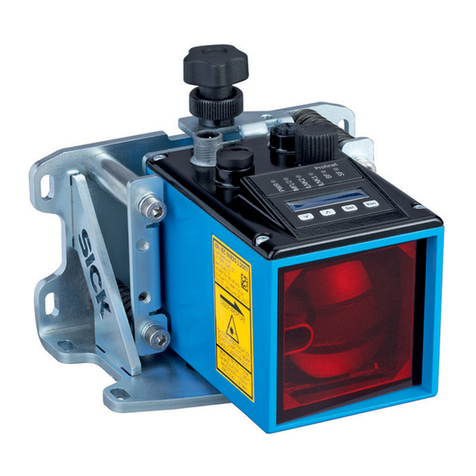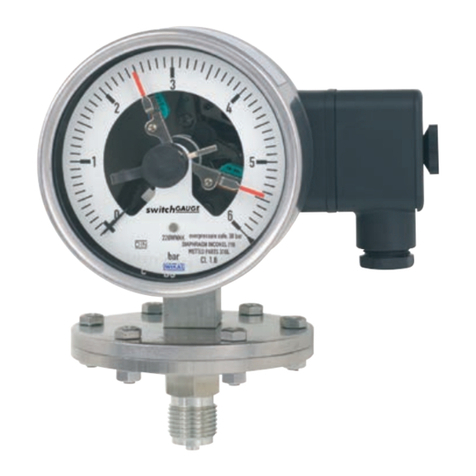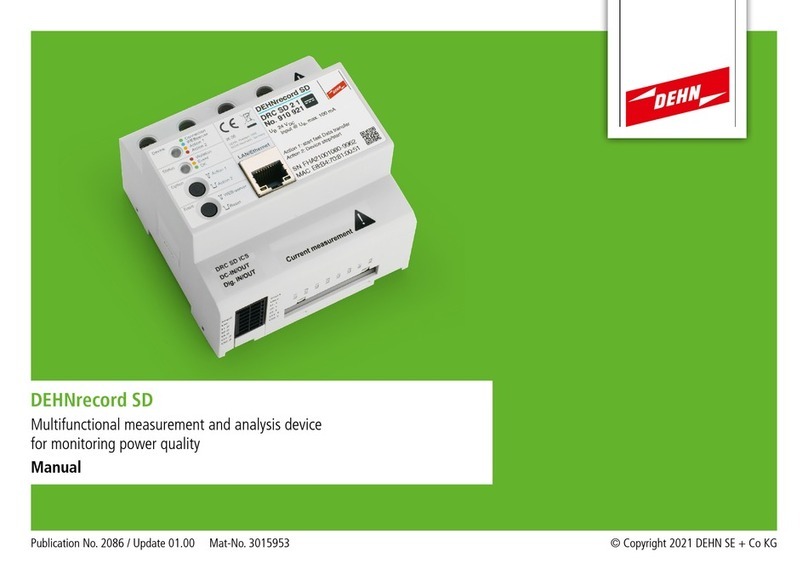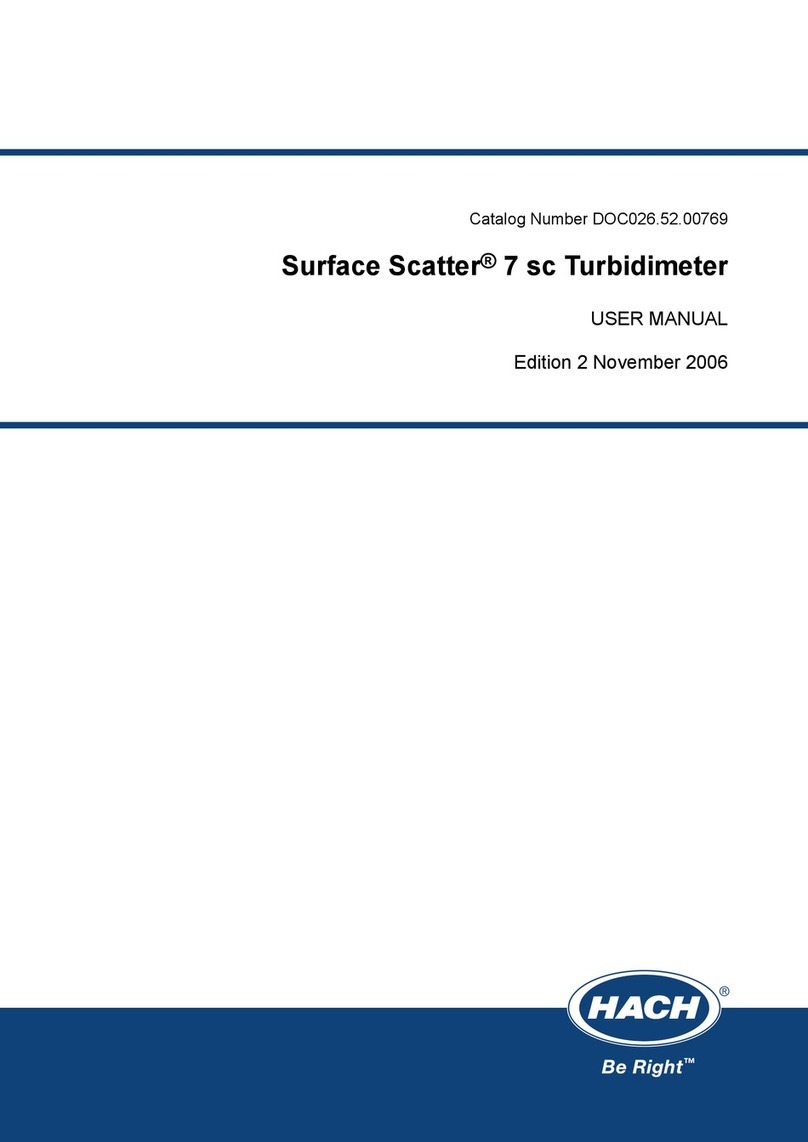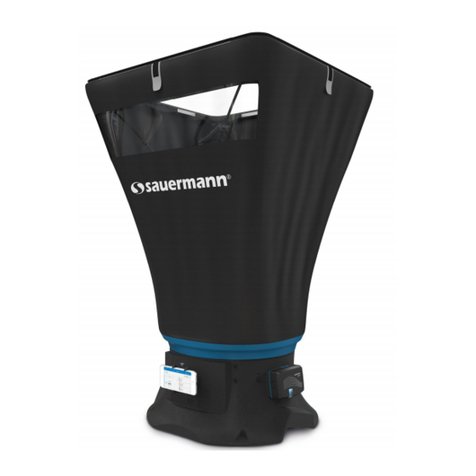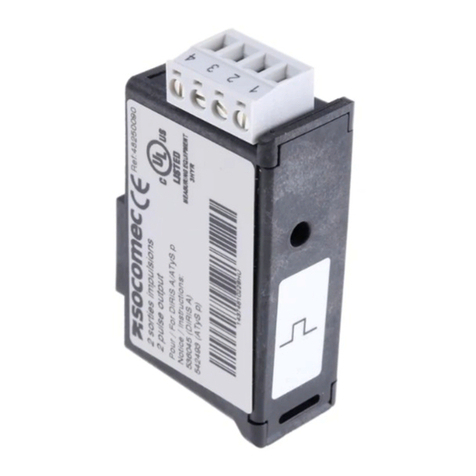Deif MIC-2 MKII User manual

Multi-instrument Communication,
MIC-2 MKII DIN Quick Start Guide
• Warnings and legal information
• Installation and terminals
• Communication
• I/O options
• Alarming
• Utility software
• More information
• Specifications
DEIF A/S · Frisenborgvej 33 · DK-7800 Skive · Tel.: +45 9614 9614 · Fax: +45 9614 9615 · info@deif.com · www.deif.com
DEIF A/S · Frisenborgvej 33 · DK-7800 Skive · Tel.: +45 9614 9614 · Fax: +45 9614 9615 · info@deif.com · www.deif.com
DEIF A/S · Frisenborgvej 33 · DK-7800 Skive · Tel.: +45 9614 9614 · Fax: +45 9614 9615 · info@deif.com · www.deif.com
Document no.:
4189320056C

2
Warnings and legal information
Legal information and responsibility
DEIF takes no responsibility for installation or operation of the unit.
If there is any doubt about how to install or operate the unit, the
company responsible for the installation or the operation of the unit must be
contacted.
Electrostatic discharge awareness
Sufficient care must be taken to protect the terminals against static discharges
during the installation. Once the unit is installed and connected, these precautions
are no longer necessary.
Safety issues
Installing the unit implies work with dangerous currents and voltages. Therefore, the
installation should only be carried out by authorised personnel who understand the
risks involved in working with live electrical equipment.
CE-marking
The unit is CE-marked according to the EMC directive for industrial environments,
which normally covers the most common use of the product. The unit may not be
opened by unauthorised personnel. If opened anyway, the warranty will be lost.
Be aware of the hazardous live currents and voltages. Do not touch any AC
measurement inputs as this could lead to injury or death.
According to the instrument model, the current input type is for 1/5 A CTs or
Flexible Current Transformer. Check the instrument model and connect the voltage
and current inputs according to the following wiring diagrams.

3
Installation and terminals
Installation
Make sure the unit is installed in a dry and dust free environment. Avoid placing
it near to heat, radiation and strong electrical interference sources. The working
temperature range of the unit is from -25°C to 70°C.
The unit can be installed into an IEC 92 mm DIN (square) or an ANSI C39.1
(4’’ round) form.
Terminals
Ground terminal connection
Ground can be connected to ground on a grounded system (star point
on the generator is connected to ground). On an IT system, terminal 13
must be left open, otherwise a false insulation error will occur.
78910
V1 V2 V3 VN
I11 I12 I21 I22 I31 I32
123456
11 12 13
L/+ N/-
Comm Port
ABS
14 15 16
Voltage input Current input
Power supply Communication

4
Communication
The default device address and the default baud rate of the DIN rail meter are 1
and 9600 respectively. Those two default values will always be used for the first
minute after the meter is powered on. The device address and the baud rate of the
meter will change to the user defined values after the first minute.
Modbus communication settings
The communication terminals are A, B, S (14, 15, 16). A is the differential signal +,
B is the differential signal –, and S is the shield. Up to 32 devices can be connected
on an RS485 Modbus. The overall length of the Modbus cable cannot exceed
1000 m. When multiple units are connected serially on the same RS485 Modbus,
each unit must be assigned a unique device address. This address can be any
integer between 1 and 247.
Ethernet communication settings (optional)
AXM-Net default settings are:
• IP Address (192.168.1.254)
• Subnet Mask (255.255.255.0)
• Gateway (192.168.1.1)
• Primary DNS Server (202.106.0.20).
To enter the settings webpage, the default password is: 12345678.
Profibus communication settings (optional)
AXM-PROFI default settings are:
• Device address 0
Profibus parameters can be set or viewed through communication using utility
software. Please refer to the Profibus module user’s manual chapter 3 “Application
of Profibus DP Protocol” for operation details.

5
I/O module (option)
Digital input (DI)
An external power supply (16~30 V DC – max load 2 mA) is required for the
digital inputs. DI can be used as a pulse counter to monitor switch status or to
monitor event sequences.
Digital output (DO)
Two modes available: alarm output and energy pulse output. One module can only
support one mode at a time. In alarming mode, conditions can be set using the
utility software. In energy pulse mode, output parameters can be set from the utility
software (voltage 20~160 V AC/DC, max. load 100 mA).
Relay output (RO)
Two modes available: control (latch or pulse) and alarm output (latch only).
One module can only support one mode at a time. In control mode, relays can be
switched on and off from the utility software. In alarming mode, conditions can be
set using the utility software (max voltage 250 V AC/30 V DC, load 3 A).
Analogue input (AI)
Each module supports 4-20 mA or 0-20 mA current input. Settings can be made
from the utility software can be from the utility software.
Analogue output (AO)
Each module supports 4-20 mA or 0-20 mA current output. Settings can be made
from the utility software.
Power supply for DI
24 V isolated power supply is used as an auxiliary power supply for digital inputs.
Output current 42 mA load, Max 21 X Digital Input (DI).

6
I/O module (option)
Three types of I/O modules with different I/O combinations are available:
AXM-IO1:
6 × DI, 2RO,
1 Power Supply
for DI
AXM-IO2:
4 × DI, 2× AO,
2× DO
AXM-IO3:
4 × DI, 2 × RO,
2×AI
Note: A maximum of 1 communication and 2 input/output modules can be used
for each unit.
I/O parameters can be set or viewed through communication using utility software.
Please refer to the I/O modules user’s manual chapter 3 for operation details.
AXM-IO2 has two analogue outputs. Please notice that functionality is limited
compared to traditional transducers. For more information, please read the I/O
modules user’s manual chapter 3.
Digital Input Relay Output VDC
DI1DI2 DI3DI4 DI5DI6 DICRO1 RO2ROC V+ V-
Digital Input Analog Output Digital Output
DI1DI2 DI3DI4 DICAO1+ AO1- AO2+ AO2- DO1 DO2 DOC
Digital Input Relay Output Analog Input
DI1DI2 DI3DI4 DICRO1 RO2ROC AI1+ AI1- AI2+ AI2-

7
Alarming
Up to 16 alarming channels can be selected from 48 available parameters.
Alarming channels and conditions can be set from the utility software.
Please refer to MIC-2 MKII DIN user’s manual section 4.4 for details.
DIN Rail Installation
Except the LCD display and the front panel control keys, the meter with DIN rail
mount option includes the same functions as the panel mount version. The
default device address and the default baud rate of the DIN rail meter are 1 and
9600 respectively. Those two default values will always be used for the first
minute after the meter is powered on. The device address and the baud rate of
the meter will change to the user-defined values after the first minute.
Utility software
The free utility software DEIF View is a user-friendly real time monitoring and data
logging for energy saving and power quality analysis. This software is intended
for users to monitor multiple parameters continuously. It allows for real-time
monitoring and maintenance.
Download DEIF View: www.deif.com/software/software-download
More information
The following can be downloaded from www.deif.com:
• MIC-2 MKII DIN user manual
• Ethernet TCP/IP - AXM-Net manual
• AXM-Profibus – AXM-PROFI manual
• I/O modules - AXM manual
• MIC-2 MKII DIN utility software
• GSD file for Profibus

Specifications
Voltage inputs
Nominal voltage UN L-N 400 V AC, L-L 690 V AC
Overload capacity 1500 V continuous, 3250 V for 1min
Nominal frequency and range 50/60 Hz, 45 Hz to 65 Hz
Current inputs
Nominal current 5 A
Overload capacity 10 A continuously, 100 A for 1 s
FCT inputs
Nominal voltage 100 mV
Frequency
Nominal frequency 50/60 Hz,
Frequency range 45 Hz to 65 Hz
Accuracy
U, I and F Class 0.2
Harmonic U, I Class 5
DEIF reserves the right to change any of the above.

Specifications
Voltage inputs
Nominal voltage UN L-N 400 V AC, L-L 690 V AC
Overload capacity 1500 V continuous, 3250 V for 1min
Nominal frequency and range 50/60 Hz, 45 Hz to 65 Hz
DEIF reserves the right to change any of the above.
Other manuals for MIC-2 MKII
1
Table of contents
Other Deif Measuring Instrument manuals
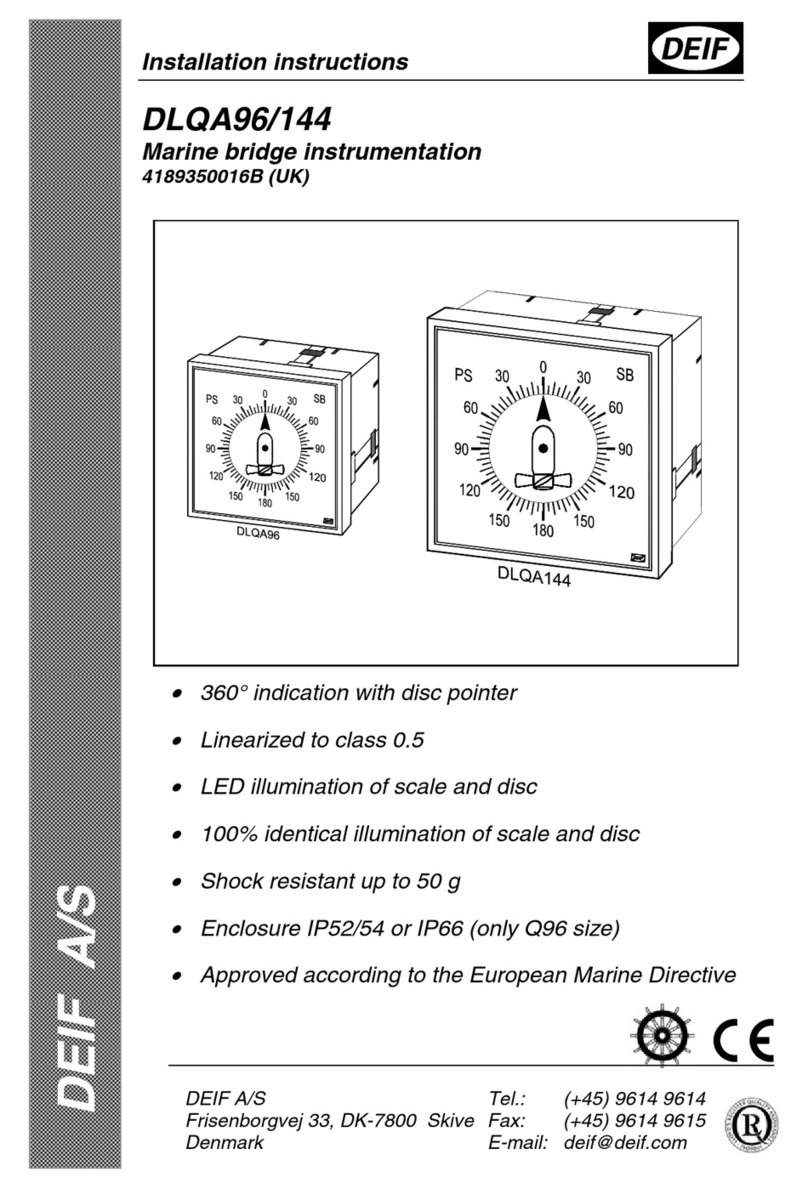
Deif
Deif DLQA96 User manual
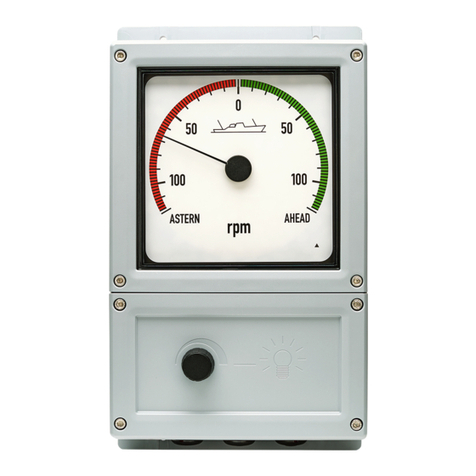
Deif
Deif BRW-2 User manual

Deif
Deif BRW-2 User manual
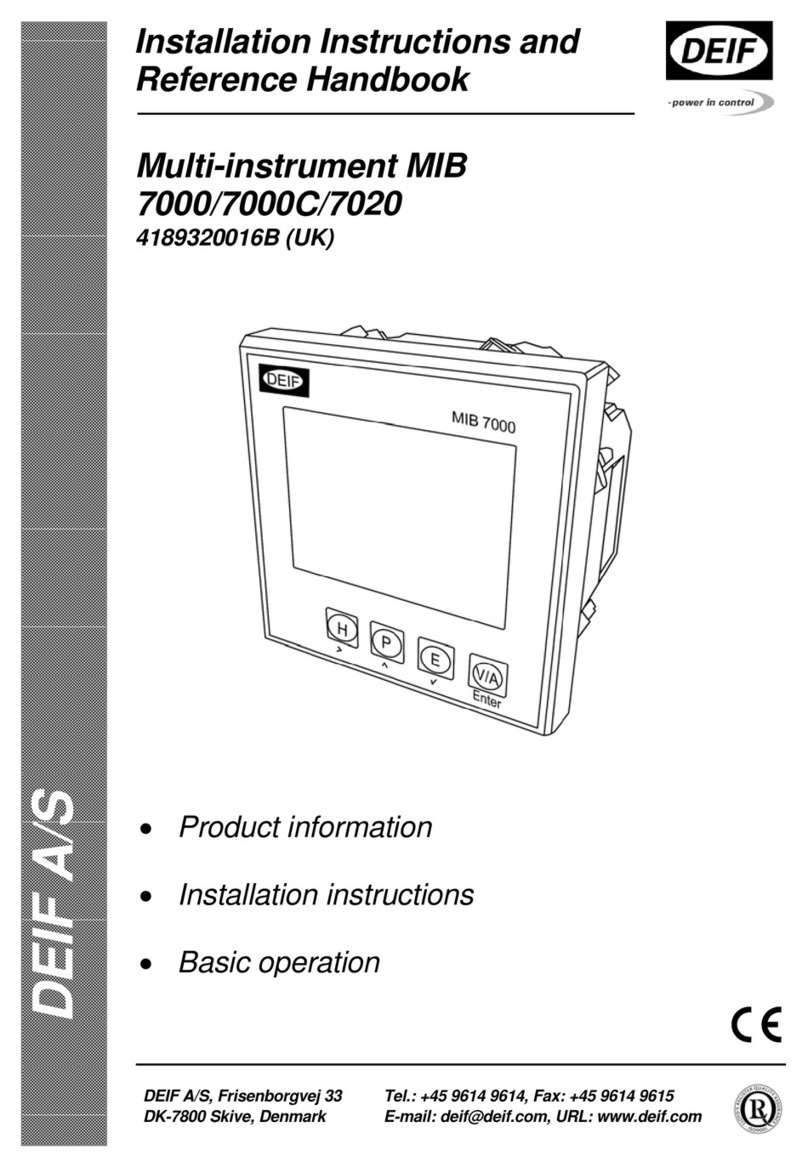
Deif
Deif MIB 7000 User manual
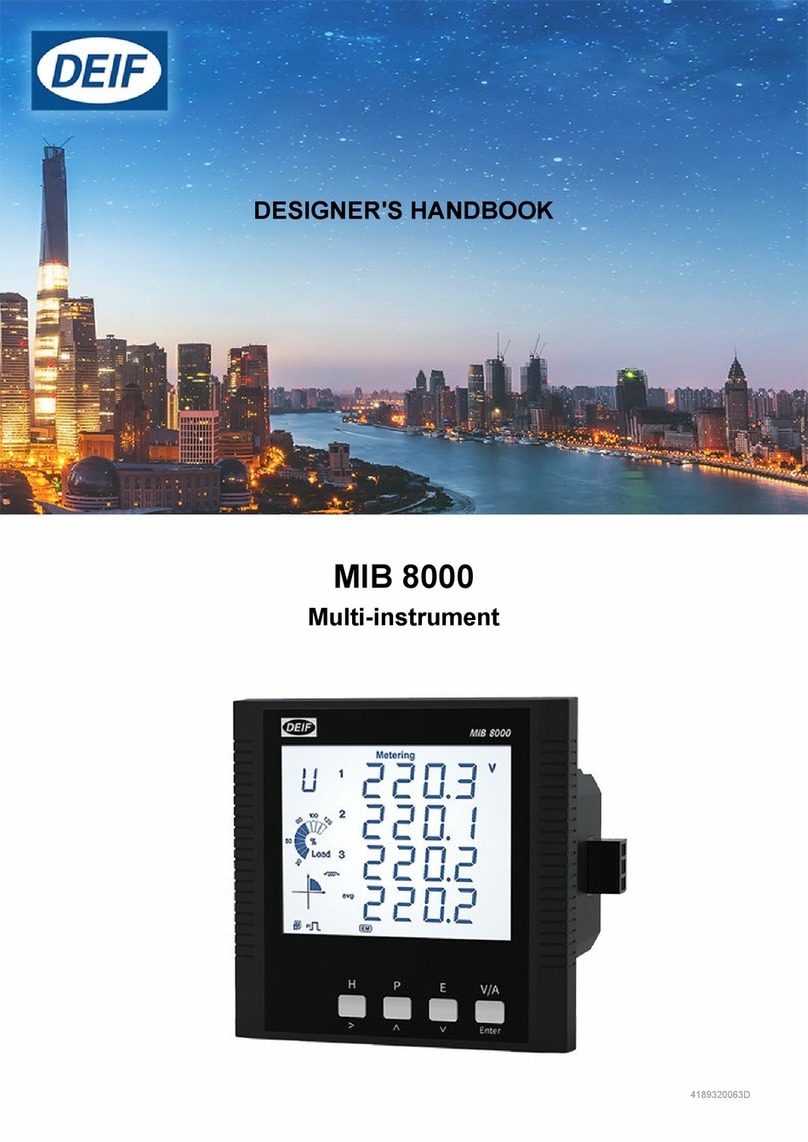
Deif
Deif MIB 8000 User manual

Deif
Deif AGC 150 User manual
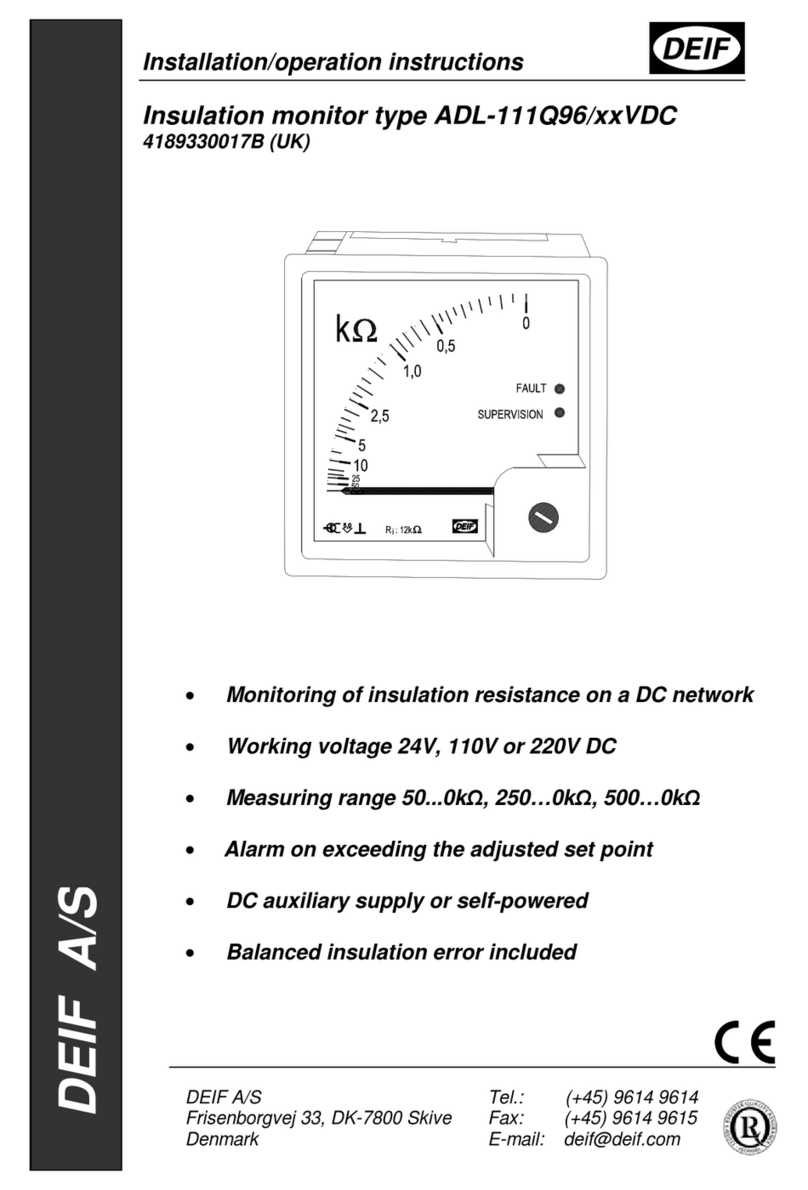
Deif
Deif ADL-111Q96/xxVDC Series Installation instructions
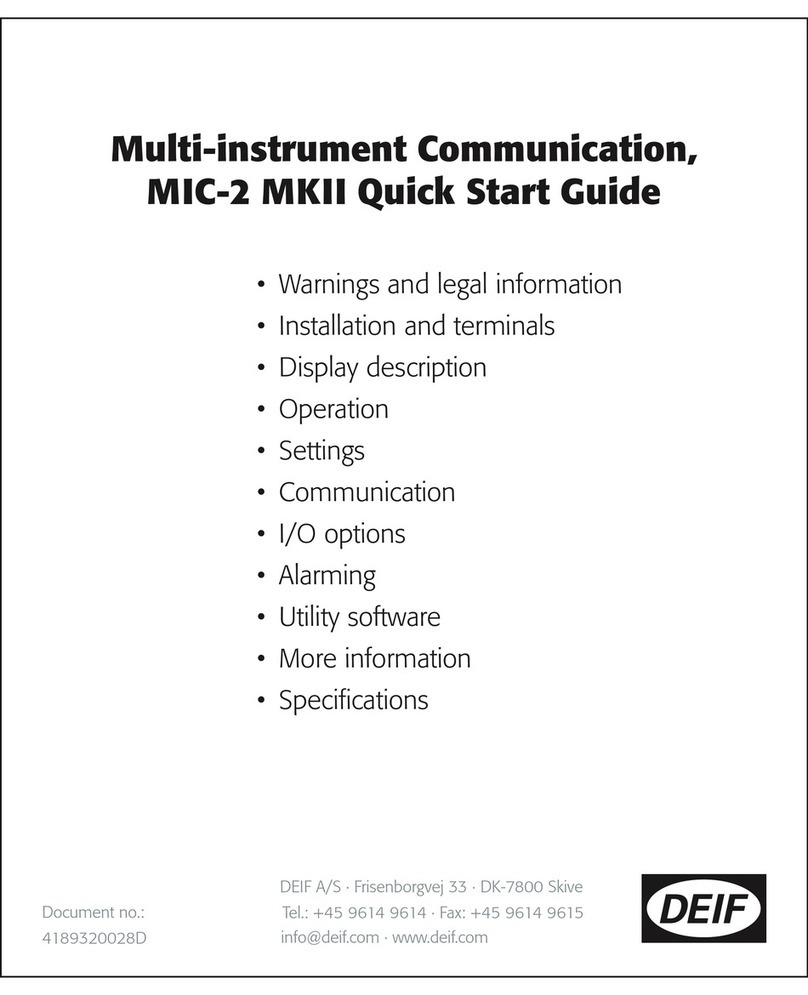
Deif
Deif MIC-2 MKII Operating and maintenance instructions
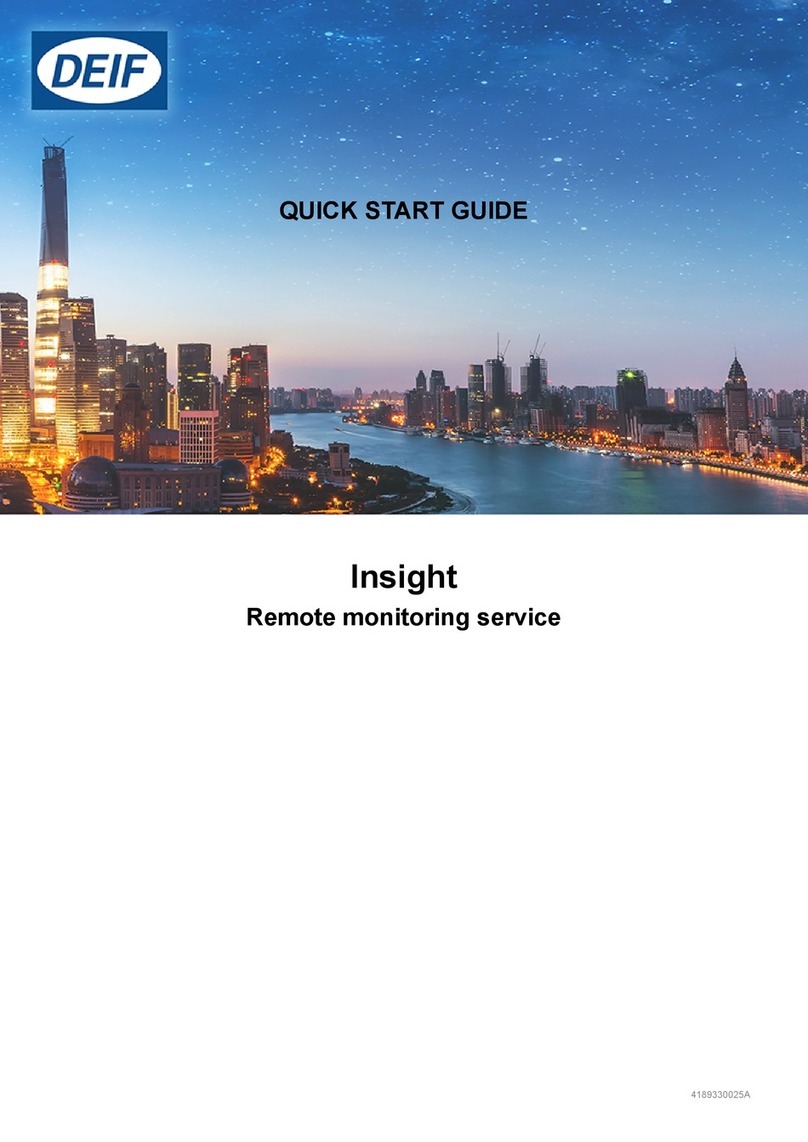
Deif
Deif Insight User manual
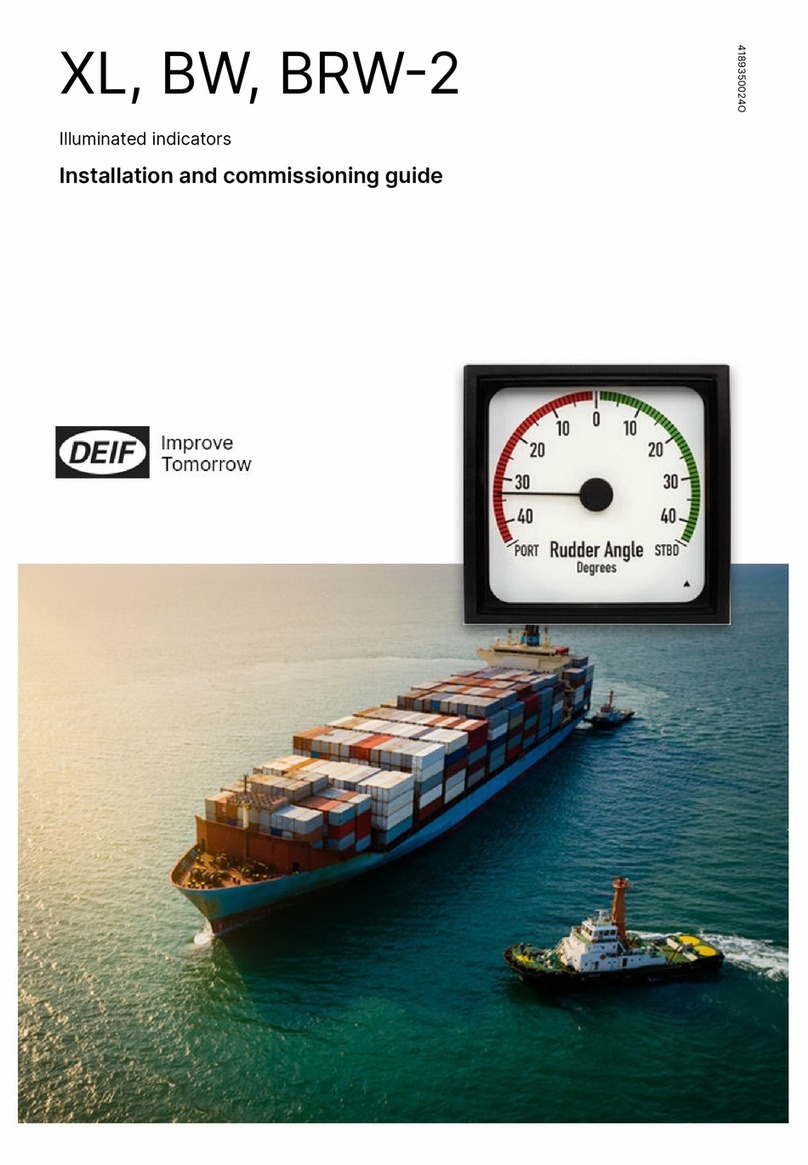
Deif
Deif XL User manual

